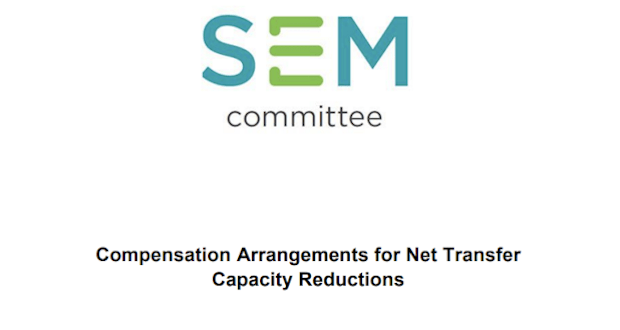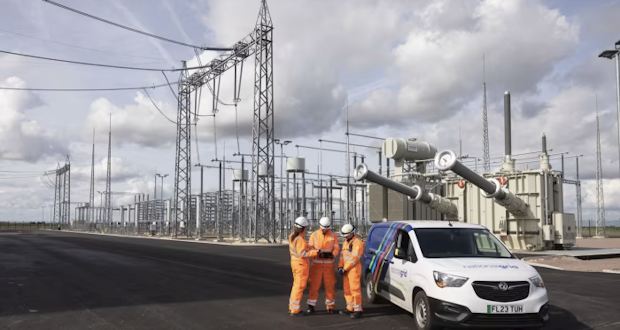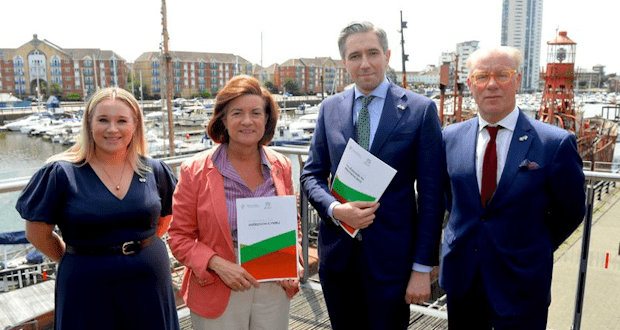 5 May 2023
5 May 2023
Emer Gerrard
Commission for Regulation of Utilities
Dublin
and
Simon O’Hare
Utility Regulator
Belfast
MaresConnect Limited (MCL) welcomes the SEM consultation on Compensation Arrangements for Net Transfer Capacity Reductions published on 15 March 2023 (the Consultation).
MaresConnect is a proposed 750MW electricity interconnector linking the power markets of Ireland (IE) and Great Britain (GB). MaresConnect has a GB interconnector licence and a GB grid connection agreement for a 750MW interconnector at National Grid’s Bodelwyddan station in North Wales. MaresConnect has submitted an application for initial project assessment in Ofgem’s current third window for Cap & Floor interconnectors and will be making an application for Cap & Floor regulation in Ireland. The project is currently undertaking environmental and technical studies and is advancing all key development workstreams.
MaresConnect is part of the Ten-Year Network Development Plan (TYNDP) 2022 list of projects recognised by the European Union (EU) as a component part of developing an integrated pan-European grid. MaresConnect has applied for Project of Mutual Interest status in the next EU list, with support from the Irish and UK governments. Further information on MaresConnect can be found at www.maresconnect.ie.
We set out below our responses to the Consultation questions.
1. Please set out your view on the appropriate arrangements for NTC reduction compensation going forward in the SEM, given the current arrangements for cross-border trading. Would this be impacted if cross-border forward hedging instruments were introduced in advance of MRLVC and, if so, in what way?
MaresConnect is of the view that the interconnector owners should be compensated for NTC reductions to ensure that they are kept whole on a “causer pays” principal, as is captured in Article 3 of the Interim Cross Zonal TSO Arrangements for GB-ISEM (ICZAs).
We note the National Grid Electricity System Operator’s methodology for NTC compensation (NGESO Methodology), as summarised in the Consultation. MaresConnect’s view is that those arrangements are appropriate and adequate to compensate for NTC reductions. It would be beneficial for interconnector owners if SEM adopted a substantially similar compensation arrangement for symmetry between the two jurisdictions.
In our view, the approach to compensation for NTC reductions would not necessarily change if cross-border forward hedging instruments were introduced in advance of MRLVC. However, MaresConnect would need to consider the exact arrangements being introduced in the future once the technical procedures are known to determine if this would have an impact on NTC reduction compensation.
2. This paper references various principles that underpin different approaches to compensation arrangements for NTC reduction (i.e. ‘causer pays’, ‘cost neutrality’, ‘different compensation arrangements for allocated and unallocated capacity’). In your view, what principles should underpin compensation arrangements for NTC reduction going forward in the SEM?
In our view, “causer pays” is an important principle to underpin the compensation arrangements adopted, as is reflected in Article 3 of the ICZAs, the NGESO Methodology and the 2009 Electricity Regulation (EU 714/2009) (the causer pays concept has been retained in the Recast Electricity Regulation (EU 2019/943)).
It is important that the TSO which is making decisions as to whether or not to apply an NTC reduction is the entity which is impacted by the financial consequences of that reduction. This is important for driving efficiency in the operation of the market, with the TSO factoring into its decision-making process the economic consequences of NTC reductions. This is also consistent with the EU principle that NTC reductions should be used as a last resort in emergency situations. As set out in the Consultation, the Recast Electricity Regulation (2019/943) expresses the concern that uncoordinated curtailments of interconnector capacities have become a serious obstacle to the development of a functioning of the internal market for electricity.
We are also of the view that “cost neutrality” is an important principle. No party should profit unfairly from the compensation arrangements, and interconnector owners should be kept whole. We note that the NGESO Methodology appears to deal with this concept appropriately.
The forecast increase in RES on the Irish network is expected to bring greater intermittency of power flows and, in turn, the need for greater intraday trading to manage such intermittency constraints. It is difficult to forecast hourly weather patterns with great accuracy in the day ahead market and TSOs as well as generators benefit from the trading of intraday, unallocated interconnector capacity to maintain network flexibility as well as the re-trading of positions taken in the day ahead market to reflect actual outturn weather conditions. Interconnectors are looking to be compensated for interruption for both allocated and unallocated capacity to avoid the tendency to allocate all capacity and reducing flexibility to TSOs to implement government policy to maximise RES integration.
3. Are there any other factors, not covered in this paper, which should be considered by the RAs ahead of a decision? If providing, please explain relevance.
In addition to the responses to questions 1 and 2, we would also like to take the opportunity to make the following general points:
- Privately financed interconnectors:
- The Greenlink Interconnector will be SEM’s first privately financed interconnector. Like Greenlink, MaresConnect is privately funded and is seeking to raise project financing for the construction of the project. Alongside the benefit of further interconnection to SEM electricity consumers, privately financed interconnectors deliver large scale infrastructure at no up-front cost to the consumer and frees up state funds for other public projects.
- Privately financed interconnectors tend to be developed by special purpose corporate structures and on the basis of non-recourse project financing. As such, they do not have large balance sheets and may be more sensitive to the potential financial impact of the arrangements relating to compensation for NTC reductions. Most importantly, lack of certainty as to the level of NTC reductions across the lifespan of the asset, coupled with uncertainty or inadequacy of compensation for those reductions, would result in a significant challenge for the business case for private interconnector developers. The levels of NTC reductions for EWIC and Moyle shown on page 5 of the consultation would be very concerning to privately financed interconnectors if adequate compensation arrangements are not in place.
- Accordingly, in order to stimulate private investment in interconnectors in the SEM, it is important to ensure that a clear and transparent arrangement is put in place to appropriately and adequately compensate interconnector owners for NTC reductions.
- Symmetrical regulation: Generally speaking, it is beneficial for regulation and operating arrangements relating to interconnectors to be as symmetrical as possible between the jurisdictions being connected. MaresConnect considers symmetrical regulation and operational arrangements to be optimal as it will ensure the operating incentives for MaresConnect are aligned between jurisdictions, minimising the potential for perverse operating outcomes.
We are available to discuss further any of the points made above.
Yours sincerely,
Simon Ludlam
CEO
Mares Connect Limited



